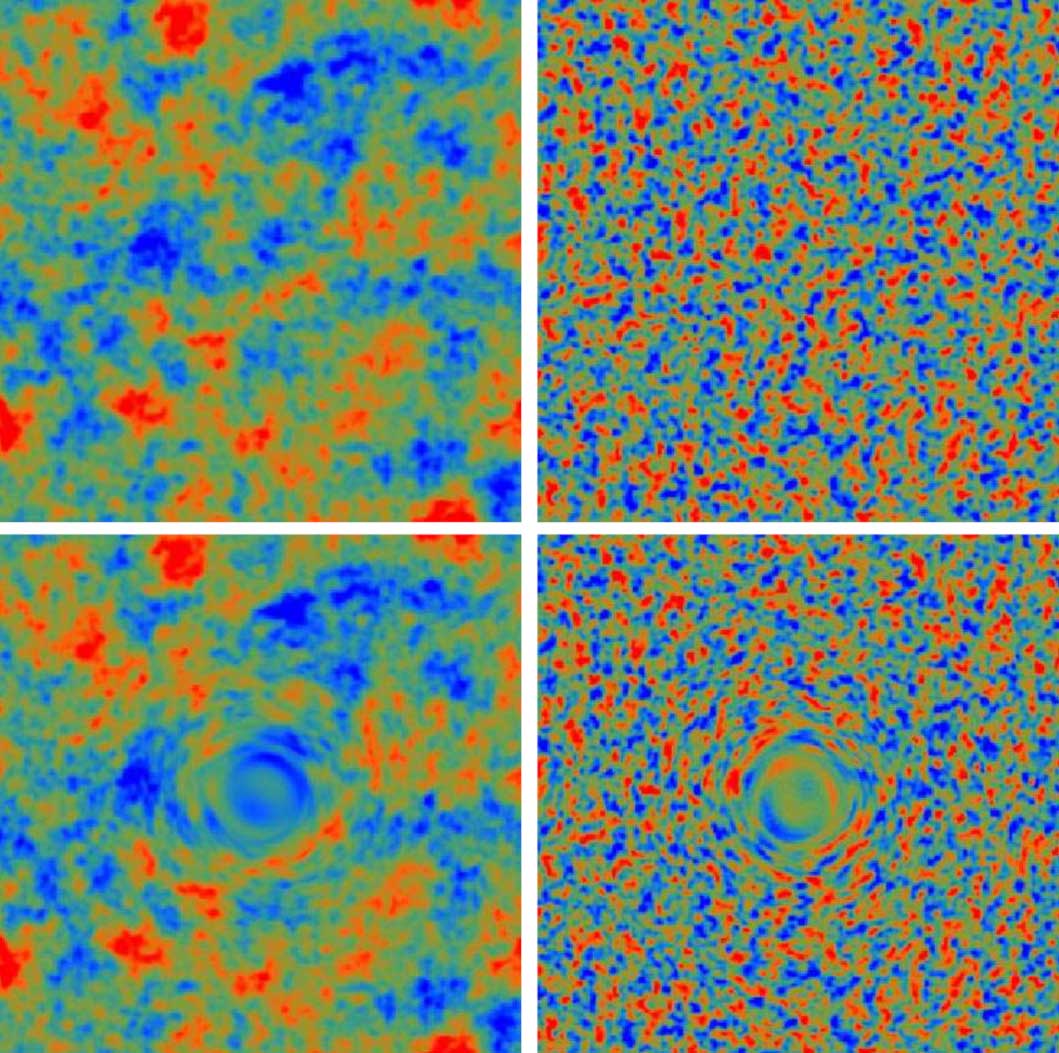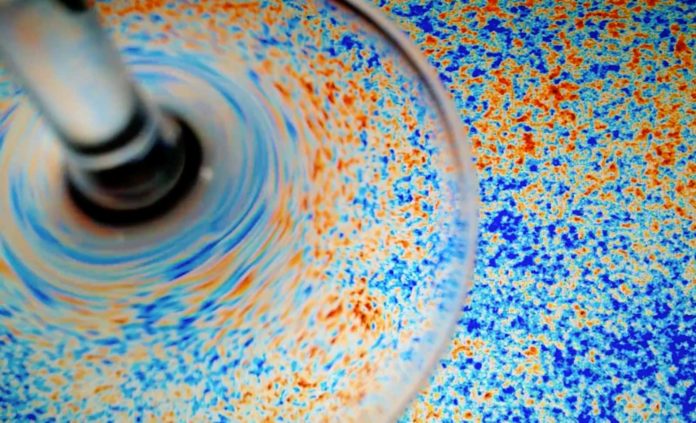The cosmic microwave background (CMB) is thought to be leftover radiation from the Big Bang or the time when the universe began. Also known as relic radiation, this CMB believed to hold many important clues to the development and distribution of large-scale structures such as galaxies and galaxy clusters.
On 21 March 2013, the European-led research team behind the Planck cosmology probe released the mission’s all-sky map of the cosmic microwave background. The map suggests the universe is slightly older than researchers expected. According to the map, subtle fluctuations in temperature were imprinted on the deep sky when the cosmos was about 370000 years old.
The imprint reflects ripples that arose as early, in the existence of the universe, as the first nonillionth of a second. Apparently, these ripples gave rise to the present vast cosmic web of galaxy clusters and dark matter. Based on the 2013 data, the universe contains 4.9% ordinary matter, 26.8% dark matter and 68.3% dark energy.

Distortions in the cosmic microwave background (CMB), caused by a phenomenon known as lensing, can further illuminate the structure of the universe and can even tell us things about the mysterious, unseen universe.
In lensing of the CMB, gravity effects from large objects like galaxies and galaxy clusters bend the CMB light in different ways. These lensing effects can be subtle (known as weak lensing) for distant and small galaxies, and computer programs can identify them because they disrupt the regular CMB patterning.
Even if lensing is a powerful technique to study an invisible universe, but there are some problems with lensing and temperature-based measurements of the CMB. The gas and dust swirling in other galaxies, among other factors, can obscure our view and lead to faulty readings of the CMB lensing.
To address this problem, a postdoctoral researcher and Owen Chamberlain Postdoctoral Fellow in the Physics Division at the Department of Energy’s Lawrence Berkeley National Laboratory (Berkeley Lab) teamed up with Simone Ferraro, a Divisional Fellow in Berkeley Lab’s Physics Division, and developed a way to improve the clarity and accuracy of CMB lensing measurements by separately accounting for different types of lensing effects.

Schaan said, “Lensing can magnify or demagnify things. It also distorts them along a certain axis so they are stretched in one direction.”
Scientists found that a certain lensing signature called shearing, which causes this stretching in one direction, seems largely immune to the foreground “noise” effects that otherwise interfere with the CMB lensing data. The lensing effect known as magnification, meanwhile, is prone to errors introduced by foreground noise.
Ferraro said, “The sources of the lensing, which are large objects that stand between us and the CMB light, are typically galaxy groups and clusters that have a roughly spherical profile in temperature maps. The study found that the emission of various forms of light from these “foreground” objects only appears to mimic the magnification effects in lensing but not the shear effects.”
“So we said, ‘Let’s rely only on the shear and we’ll be immune to foreground effects. When you have many of these galaxies that are mostly spherical, and you average them, they only contaminate the magnification part of the measurement. For sheer, all of the errors are basically gone.”
“It reduces the noise, allowing us to get better maps. And we’re more certain that these maps are correct, even when the measurements involve very distant galaxies as foreground lensing objects.”
The new method could benefit a range of sky-surveying experiments including the POLARBEAR-2 and Simons Array experiments, which have Berkeley Lab and UC Berkeley participants; the Advanced Atacama Cosmology Telescope (AdvACT) project; and the South Pole Telescope – 3G camera (SPT-3G). It could also aid the Simons Observatory and the proposed next-generation, multilocation CMB experiment known as CMB-S4 – Berkeley Lab scientists are involved in the planning for both of these efforts.
It could also enhance the science yield from future galaxy surveys like the Berkeley Lab-led Dark Energy Spectroscopic Instrument (DESI) project under construction near Tucson, Arizona, and the Large Synoptic Survey Telescope (LSST) project under construction in Chile, through joint analyses of data from these sky surveys and the CMB lensing data.
During the study, scientists basically relied on simulated full-sky CMB data. They used resources at Berkeley Lab’s National Energy Research Scientific Computing Center (NERSC) to test their method on each of the four different foreground sources of noise, which include infrared, radiofrequency, thermal, and electron-interaction effects that can contaminate CMB lensing measurements.
Schaan said, “We couldn’t have done this project without a computing cluster like NERSC. NERSC has also proved useful in serving up other universe simulations to help prepare for upcoming experiments like DESI.”
“The method developed by Schaan and Ferraro is already being implemented in the analysis of current experiments’ data. One possible application is to develop more detailed visualizations of dark matter filaments and nodes that appear to connect matter in the universe via a complex and changing cosmic web.”
Ferraro said, “This was an outstanding problem that many people had thought about. We’re happy to find elegant solutions.”
The study is published on May 8 in the journal Physical Review Letters.
